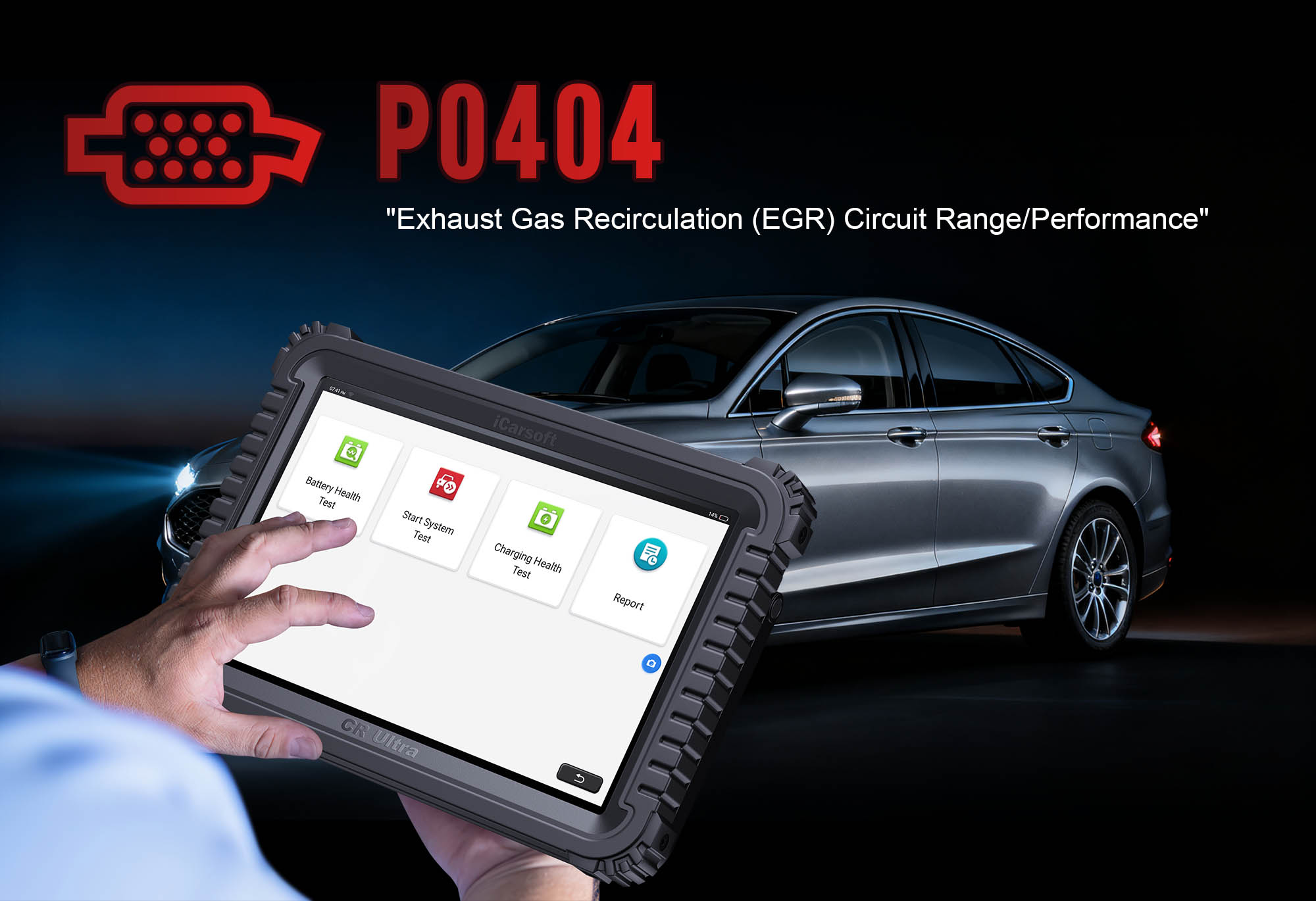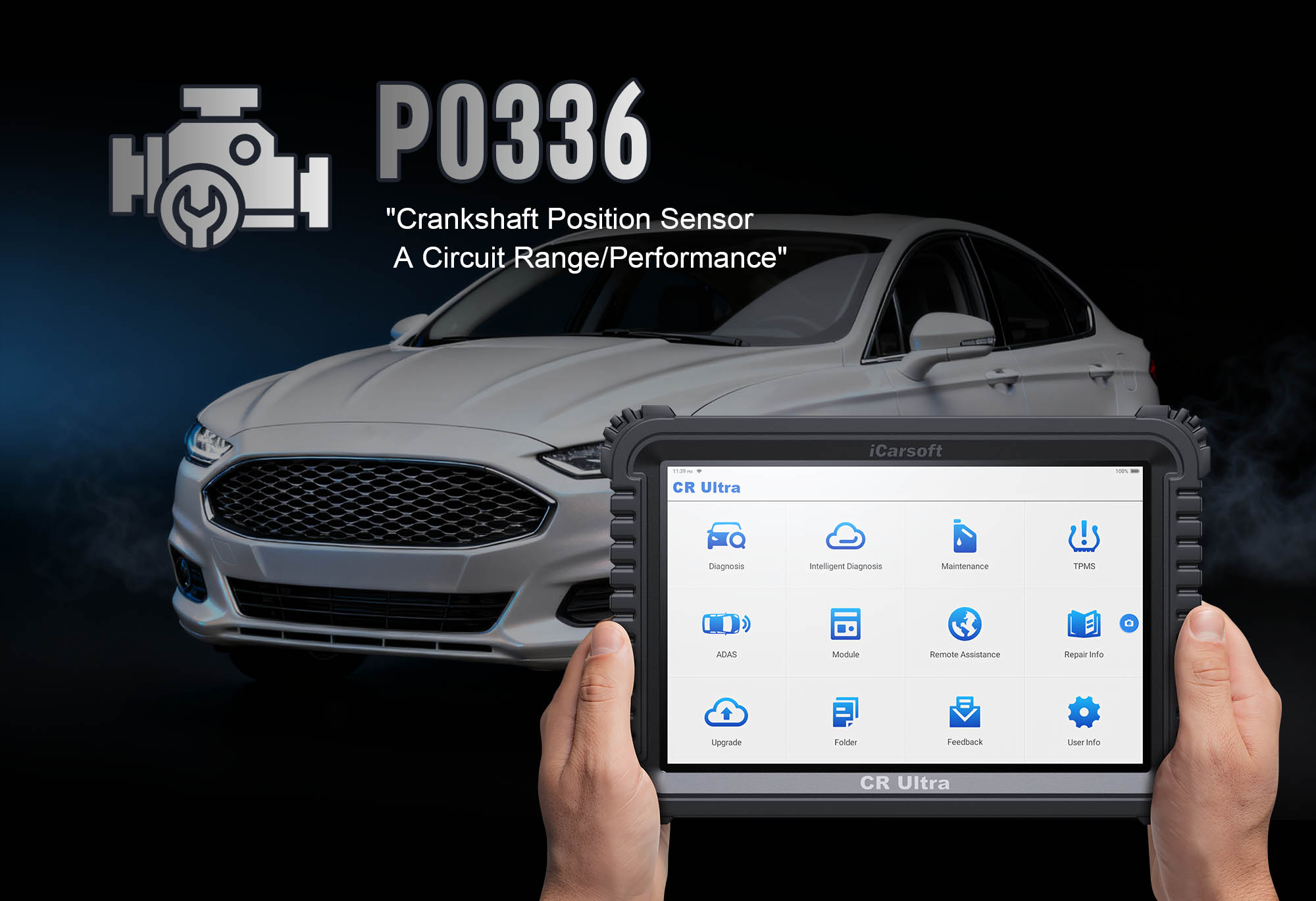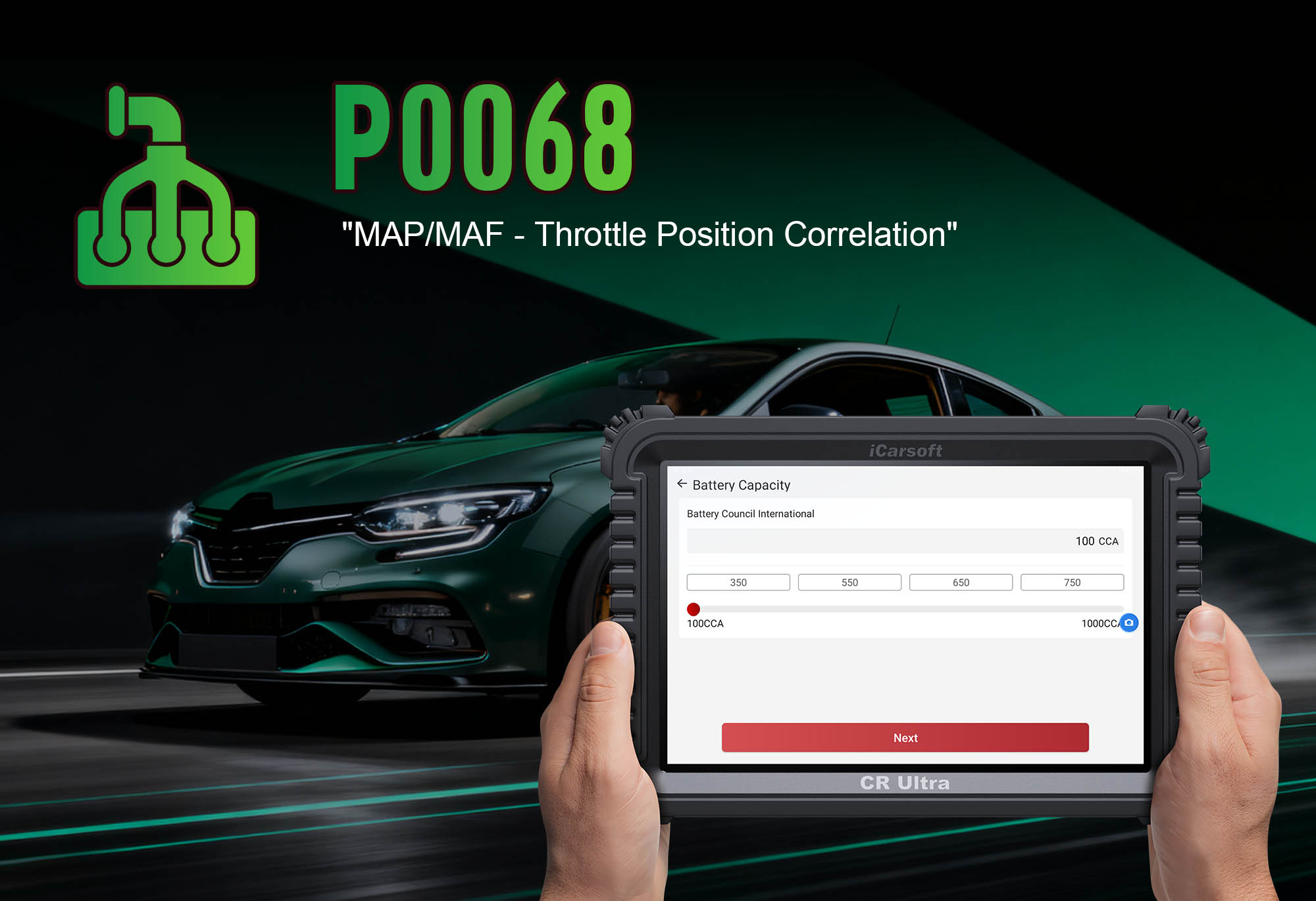P1556-P1557 with iCarsoft CR Eagle: Fix Throttle Actuator Control Issues
When your vehicle’s check engine light illuminates and a scan reveals P1556 or P1557, you’re dealing with critical issues in the throttle actuator control (TAC) system. These manufacturer-specific codes (common in GM, Ford, and Chrysler vehicles) indicate problems with the circuit that regulates your engine’s throttle opening—directly impacting power, fuel efficiency, and drivability.
P1556 typically stands for "Throttle Actuator Control Circuit High," while P1557 means "Throttle Actuator Control Circuit Low." Unlike generic codes, these point to specific voltage irregularities in the TAC system, which controls how much air enters the engine (and thus how much power it produces).
Basic scanners can read these codes but lack the tools to isolate whether the issue is a faulty throttle body, damaged wiring, or ECM malfunction. The iCarsoft CR Eagle, however, is engineered to diagnose TAC system faults with precision. Let’s walk through how to use it to resolve P1556-P1557.
What You Need to Know About P1556-P1557
First, understand the role of the TAC system and why these codes matter:
The Throttle Actuator Control System
Modern vehicles use electronic throttle control (ETC) instead of mechanical cables. The TAC system includes a throttle body (with a motorized valve), position sensors, and an ECM that adjusts throttle opening based on accelerator pedal input.
Code Breakdown: P1556 vs. P1557
| Code |
Definition |
Typical Trigger (Manufacturer-Specific) |
Common Root Cause |
| P1556 |
Throttle Actuator Control Circuit High |
Voltage >6V (GM) / >7.2V (Chevy Silverado) for 5+ seconds |
Short to power in wiring, failing actuator motor |
| P1557 |
Throttle Actuator Control Circuit Low |
Voltage <0.5V (Ford) / <0.8V (Chrysler) for 3+ seconds |
Short to ground, broken wire, weak sensor signal |
Key Symptoms
Reduced Engine Power
Vehicle stuck in "limp mode" to prevent TAC system damage.
Unresponsive Accelerator
No power increase when pressing the pedal (throttle won’t open).
Rough Idle/Stalling
Engine idles erratically or shuts off suddenly.
Fluctuating RPM
Engine speed jumps at constant throttle (e.g., 1,500–2,000 RPM at 60mph).
Dashboard Warnings
Check Engine Light + "Reduced Power" or "Throttle Fault" messages.
Common Causes of P1556-P1557
-
Faulty Throttle Body: Actuator motor fails (can’t open/close valve) or internal position sensors send erratic signals.
-
Damaged Wiring: Wires between throttle body and ECM fray, short, or corrode—disrupting voltage flow.
-
Loose/Corroded Connectors: 6-8 pin throttle body plug develops corrosion or bent pins (creates resistance).
-
Dirty Throttle Body: Carbon buildup sticks the valve open/closed, straining the actuator motor (causes voltage spikes/drops).
-
ECM Malfunction (Rare): ECM’s TAC circuit driver fails, sending incorrect voltage to the throttle body.
Why iCarsoft CR Eagle is Ideal for P1556-P1557
The CR Eagle outperforms basic scanners for TAC system diagnostics with specialized features:
TAC System Live Data
Monitors actuator voltage (11.5–14.5V normal), motor current (0.5–2A), and dual throttle position sensor readings (should mirror each other).
Bi-Directional Control
Manually opens/closes the throttle valve (10%–50% increments) to test motor response—rules out wiring/ECM issues.
Circuit Resistance Testing
Built-in multimeter checks wiring continuity and connector resistance (<5 ohms normal) to spot shorts or corrosion.
Throttle Relearn Function
Resets ECM’s throttle position memory after repairs—ensures proper calibration (critical for ETC systems).
Vehicle-Specific Diagrams
Color-coded TAC circuit paths (throttle body to ECM) for your make/model—simplifies wiring inspections.
Step-by-Step: Diagnose P1556-P1557 with iCarsoft CR Eagle
-
Connect the Tool & Confirm the Codes
- Plug the CR Eagle into the OBD-II port (under the dashboard) and power it on.
- Select vehicle make/model/year (use AutoVIN for accuracy—critical for TAC specs).
- Navigate to Engine > Read Codes to confirm P1556, P1557, or both. Note related codes (e.g., P0121 for throttle position sensor fault).
- Tap Code Details to view manufacturer-specific triggers (e.g., "TAC voltage >7.2V for 5s" for P1556 in a Silverado).
-
Analyze TAC System Live Data
Real-time data reveals voltage irregularities causing the codes:
- Go to Engine > Live Data > Throttle Control and select:
- "Throttle Actuator Voltage" (11.5–14.5V normal).
- "Throttle Position Sensor 1/2" (readings should be within 0.1V of each other).
- "Actuator Motor Current" (0.5–2A normal during operation).
- Start the engine (if possible) and monitor for 5 minutes:
- P1556: Voltage >15V or current >3A → Short to power or stuck motor.
- P1557: Voltage <9V or current <0.2A → Broken wire or sensor failure.
- Mismatched sensor readings → Faulty throttle position sensor (common in P1557).
-
Test Throttle Actuator with Bi-Directional Control
Safety Note: Perform this test with the engine OFF (key in "On" position) to avoid unexpected acceleration.
- Navigate to Special Functions > Throttle Control > Actuator Test.
- Follow on-screen prompts to open the throttle in 10% increments (10% → 30% → 50%).
- Interpret results:
- Motor responds (valve moves when activated) → Actuator is functional—issue is wiring/sensors.
- No response → Motor is faulty (replace throttle body) or no power (check fuses/wiring).
-
Inspect Wiring & Connectors
If the actuator test passes, focus on electrical integrity:
- Locate the throttle body (use CR Eagle’s Component Location—attached to the intake manifold). Disconnect its electrical connector.
- Inspect the connector: Clean corrosion with electrical contact cleaner; straighten bent pins. Replace if pins are broken.
- Test wiring continuity:
- Use the CR Eagle’s Continuity Test and wiring diagram to identify "power," "ground," and "signal" wires.
- Connect probes between the throttle body connector and ECM connector (follow diagram paths).
- No continuity → Broken wire (repair with heat-shrink tubing).
- Resistance >5 ohms → Corroded wire (replace the affected section).
-
Check Throttle Body Cleanliness & Mechanics
Carbon buildup strains the actuator—causing voltage issues:
- Remove the throttle body (follow CR Eagle’s Service Tips for torque specs and bolt locations).
- Inspect the valve and housing: Clean carbon deposits with throttle body cleaner and a soft brush.
- Manually move the valve: It should glide smoothly—stiffness indicates binding (causes motor strain).
Repair, Clear Codes & Relearn
1. Address the Root Cause
- Faulty Throttle Body: Replace with an OEM unit (use CR Eagle’s Part Lookup for the correct part number).
- Wiring Issues: Repair damaged sections or replace the harness if severely corroded.
- Sensor Failure: Replace the throttle body (most have non-serviceable sensors) or individual sensors (if available).
- ECM Problems: Consult a professional for testing/reprogramming (only if all other components check out).
2. Clear Codes & Perform Throttle Relearn
- Reconnect all components (throttle body, connectors, battery).
- Clear codes: Navigate to Clear Codes and select P1556/P1557. Confirm deletion.
- Run throttle relearn:
- Go to Special Functions > Throttle Control > Idle Relearn.
- Follow on-screen prompts (varies by vehicle—may require idling for 10 minutes or driving at steady speeds).
3. Verify Repairs
- Start the engine and idle for 5 minutes—ensure smooth operation (no rough idle).
- Test drive: Gradually increase throttle (check for hesitation or reduced power).
- Re-scan with the CR Eagle after 30+ miles—no P1556-P1557 means success.
Prevention Tips
- Annual Throttle Body Cleaning: Use throttle body cleaner to prevent carbon buildup (critical for GDI/turbo engines).
- Wiring Inspections: Check TAC circuit wires during tune-ups—look for wear near hot components (e.g., exhaust manifolds).
- Quality Fuel: Use Top Tier detergents to reduce carbon deposits (poor fuel accelerates buildup).
- Avoid Sudden Throttle Input: "Flooring it" from a stop strains the actuator motor over time.
- Quarterly Scans: Run the CR Eagle’s Throttle System Health Check to catch voltage irregularities early.
Conclusion
P1556-P1557’s "reduced power" warning can be alarming, but the iCarsoft CR Eagle turns these codes into solvable issues. By combining live data monitoring, bi-directional tests, and vehicle-specific guidance, it helps you fix the real problem—whether it’s a dirty throttle body, faulty wiring, or failing actuator—without wasting money on unnecessary parts.
For anyone dealing with unresponsive acceleration or limp mode, the CR Eagle is the key to restoring full throttle control. Don’t let TAC system faults slow you down—grab your tool and get back to smooth, powerful driving.





